
THE HANDSTAND
MAY 2005

Lucien Freud, the paradox.
by Jocelyn Braddell
Lucien
Freud has just unveiled his most recent painting. There
are people making comments about it right away in The
Guardian newspaper. Some observe that the girl who
grovels at the painter's feet (self-portrait of the
artist himself) is holding onto his ankle, although she
is actually holding onto her own...(did they think Lucien
had no trousers on?); some make acrid comments about the
pose, noticing perhaps that she has latched one finger in
his trouser pocket.... However as a painting it is the
colours that provide clues that the symbolism of Moses
and the Burning Bush is for the artist, now dust and
ashes, and isn't that the artist's rat just emerging from
the cloths behind the young woman? There are the sticks
on the chair giving off the smoke of the offering and
there is the altar table behind them and is it a portrait
bust of a woman on the floor? I have not seen this actual
painting so I have to go by a variety of photographs. The
walls, the skylight redolent with bright sunbeams provide
the clue that it is not the dying of the light that is
bothering Freud, or the self-reflective vanity of the
title, The Painter Surprised by a Naked Admirer; but
perhaps the memory, the inmost mental survey of all that
has gone within the canvas he has stood before for so
many many years. He has often depicted naked women and
has coiled them in so many provocative sensual poses
revealing the 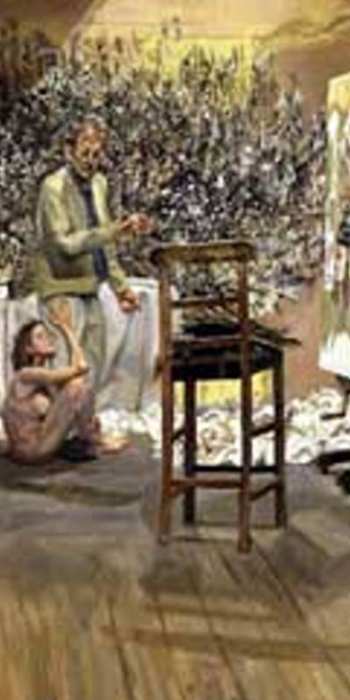 pubic
hair or a glimpse of the labia; and naked men too,
homosexuals in weary decline, one young man lies there
sweating from heat, his genitals the main display, until
you see the rat in his hand.
pubic
hair or a glimpse of the labia; and naked men too,
homosexuals in weary decline, one young man lies there
sweating from heat, his genitals the main display, until
you see the rat in his hand.
This new painting contains a portrait of itself, its
position is taken at such a slant that it is difficult,
from the photo I have, to be sure that what I observe is
correct - it may be the same subject but it is not the
same painting. The painter in the latter seems to be
without either his head, or his mind... the man also
appears to be two seperate forms facing one
another.However it is really impossible to judge. The
colours are exceptionally beautiful, the middle ground
beautiful foggy greys, the light mellow and some
beautiful fleshtones.The painting reproduced here has cut
the right hand side short (Sunday Times)A full
reproduction is at the bottom of the page.
Freud has made very few symbolic pictures that I know of. It is possible to maintain that the nude is a form of symbolic representation of our world, but infact to symbolise our world he would have better painted heavily clothed people holding on to dildos and condoms.......... or in this last thirty years the frightful torment of abused children since the advent of Aids has frightened people from sexual games among their peers. Instead he took up latterly painting exceedingly gross fat men and women in poses that only demonstrated the enormous torso.......laden frames. Joseph Beuys must have stood in ghostly appraisal of all that lard in the studio.
The astonishing thing is that he has made some of the most powerful portraits of men and women, gentle and beautiful canvases, of people whose minds, maybe, he almost worships, as realities that confirm that it is possible to live.These are people who are without the signs of the terrible price paid for sexual repression in England, these are men and women whom he could not strip. These people, naked or clothed have made him endure a respect for them. Though he tries hard to kill them, he cannot. But how many he has killed! A lot of young women, the Queen of England, and ponderous aristocrats from the circles he likes to maintain as life-style for his status.
We used hear when we hung around the art-school crowd as students how he taught his pupils - approaching them as they worked in the little cells they built as personal studios in the corridors of the Academy, he would stand behind them and magnetise fear with his terrible silence and then slope off like a dog. Rarely he would seize a brush and paint on the student's work, without explanation or a word. He had rooms rented in Soho, returning one night from the French House, where we all drank, finding a thief in his rooms., he offered the lad a cup of tea and they talked into the night..... As a sexual entrepreneur it was ofcourse supposed that he took advantage of the young fellow's fear to take reprisal. I remember him standing infront of me in the French House which was always gloomily lit in those days, he wore black and he stared at me out of the shadows. Suddenly he gave me money and told me to realise that now my lover's father had been executed that there would be no more use for me, and my fellow would return to hang around in the aristocratic circles to which a marriage had lifted him. "And don't think anymore about that scorpion", he said.Thus were the weighty circles of criminals and frauds evaluated in the 1940s.
It is always personal memory that carries obsession to
new levels, and Freud is really a wonderful example of
that human recoil from aggression. Has he taught anything
though to the women who laid out their cunts for him? I
should imagine that Kate Moss is pretty riled at being
unable to purchase her dream portrait, ha ha. It was
probably Freud's attraction for her boyfriend rockstar
whose presence actually persuaded Freud to make a job of
it. There is supreme boredom emanating from the artist,
cursing the brush strokes of so many of his victims. But
look at some of these contradictions, and incidentally
Freud demanded that all the walls in a huge gallery be
painted this apricot pink for a previous one man show in
London.
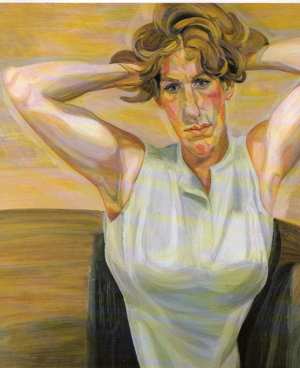
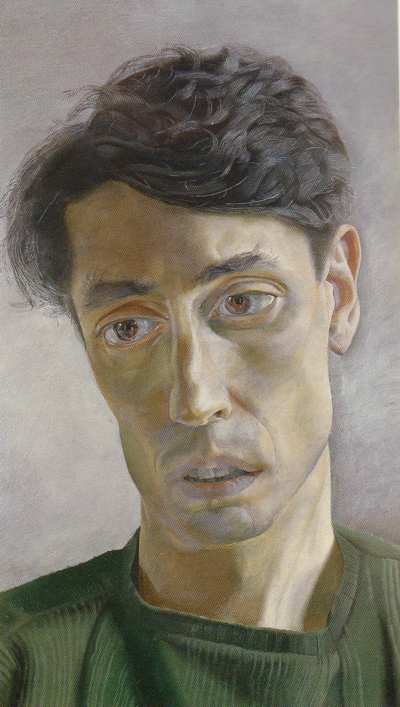 John
Minton
John
Minton
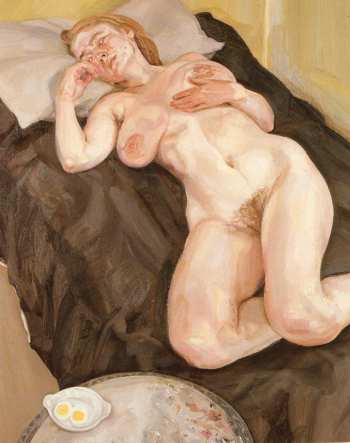
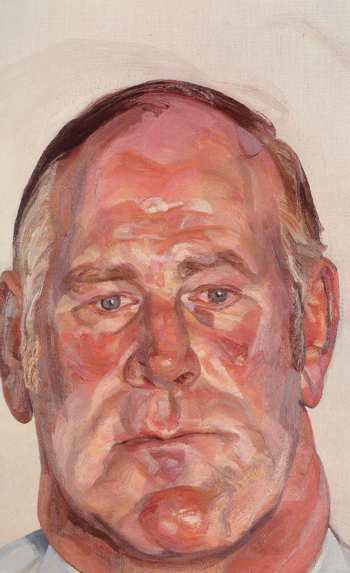
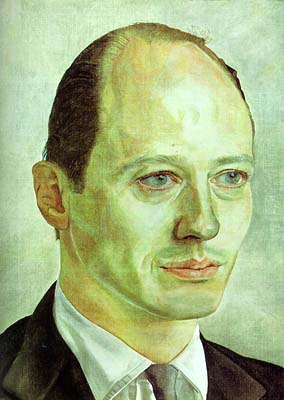
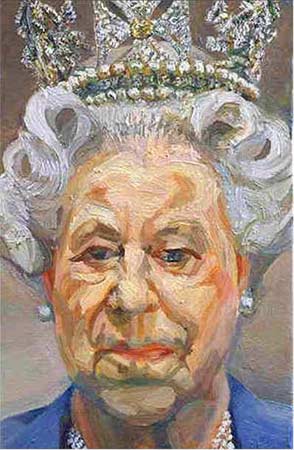
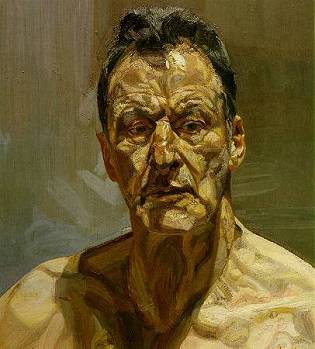 self-portrait
self-portrait
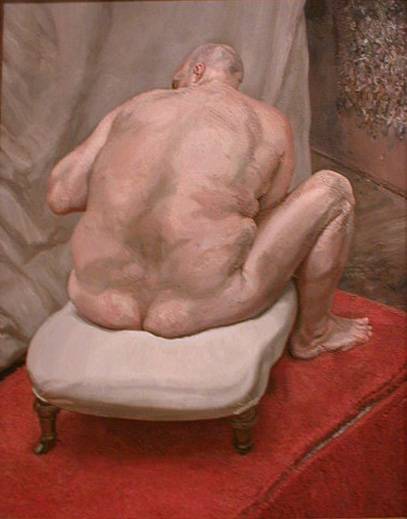
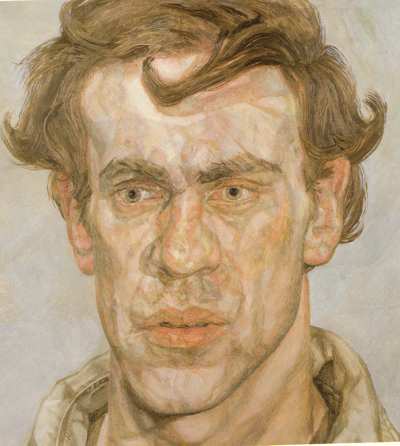
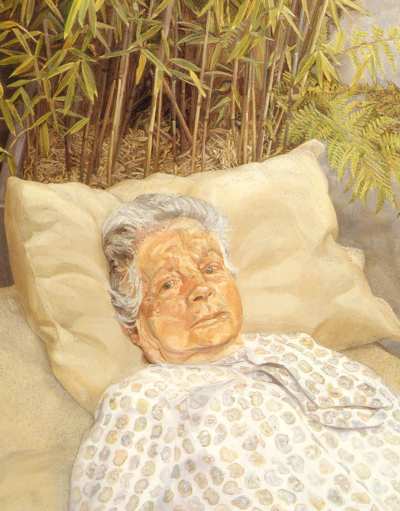 Freud's
mother
Freud's
mother
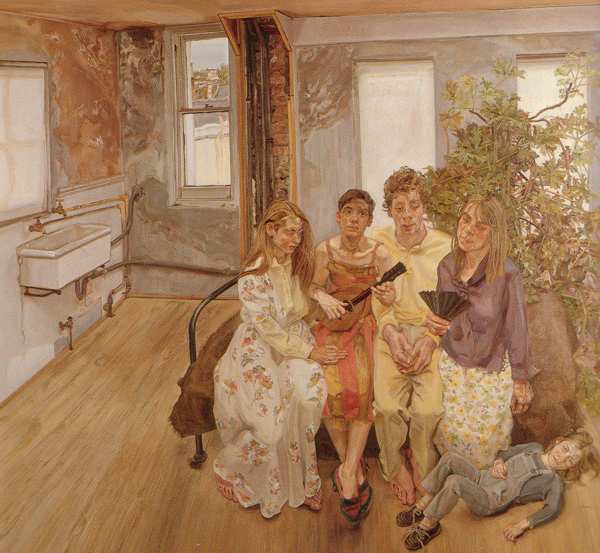
And here is the latest painting, photo from The
Guardian
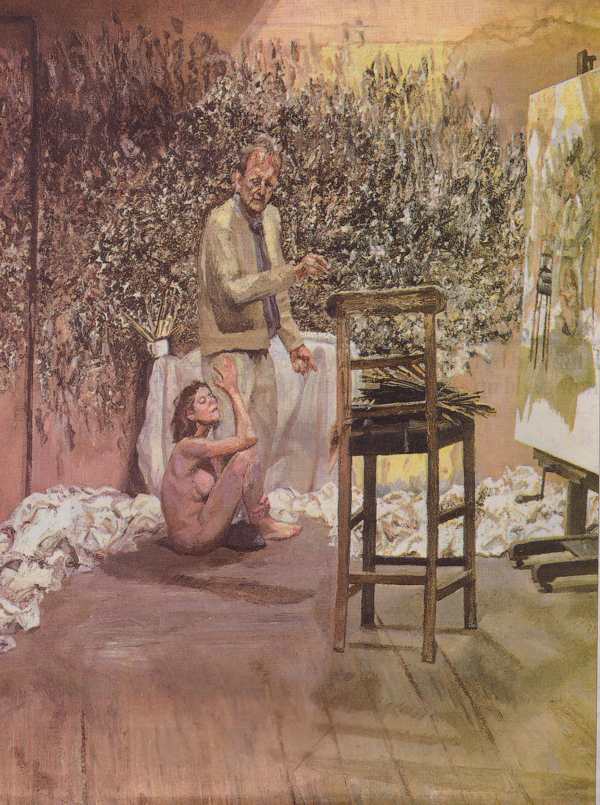
And for good measure one last hint that the rag ullidge
that is part of certain painter's craft has ominous
meanings for Lucien Freud:
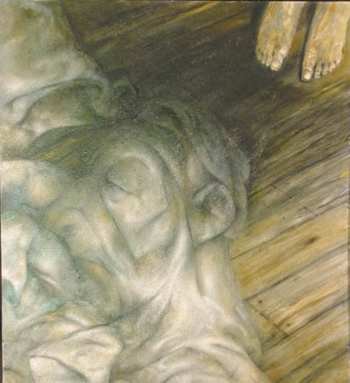
| (b. 1922) Lucien Freud, German-born British painter and grandson of Sigmund Freud, moved to England with his parents in 1931 and was naturalized a British subject in 1939. He began working as an artist full time when he left the Merchant Navy in 1942. Freud went on to win a prize at the Festival of Britain in 1951 with the piece, Interior at Paddington. Freud is best known for his figurative work, specifically nudes and portraiture. His early works were painstakingly detailed and extremely well rendered. He preferred working with subjects that he knew personally. Freud is often classified a realist but the stylized intensity of his work set him apart from the typical British figurative work of post World War II. In the late 1950’s Freud’s work shifted and he adopted a broader stroke and more dramatic lighting and poses of subjects. |
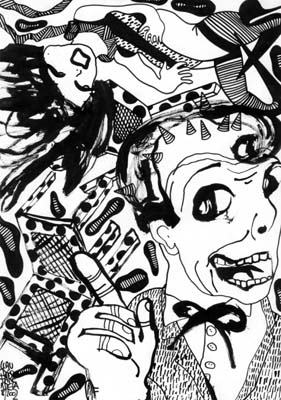
Artist: Claudio Parentela